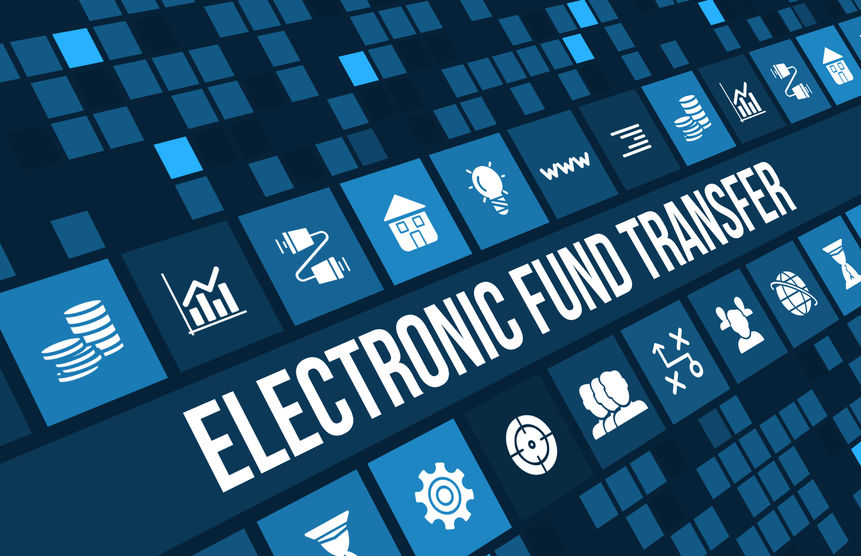
What Is ACH?
An ACH merchant account is an excellent alternative to card payments, allowing you to capture sales from customers that do not have cards, are maxed out on cards, or simply prefer to pay with an electronic bank transfer.
ACH rates are also often significantly lower than rates for processing cards. Which results in savings on payment processing costs while helping reduce fraud & chargebacks.
The Automated Clearing House Network (ACH Network) provides the framework necessary for the processing of ACH payments, a type of transaction that is increasingly popular across the United States. ACH electronically debits money from your customers' bank account and automatically credits the funds to your business bank account.
History of ACH
Looking at the history of the National Automated Clearing House Association (NACHA), one immediately sees a continuous drive for innovation and expansion. The foundations of the network were set in 1974 when several ACH associations formed NACHA, and only four years later, as additional rules and regulations were put into place, it became possible for any two financial institutions across the United States to process this type of payment.
Over the next three decades, the institutional framework of NACHA was further developed, an evolution that paved the way to the implementation of internet and telephone-initiated payments (2001) and international payments (2009). The network now has the capacity to process both one-time and recurring transactions.
Simple Way to Collect Payments
The mechanism behind ACH payment relies on the exchange between an Originating Depository Financial Institution (ODFI), which can be either an individual, corporation, or some other entity, and a Receiving Depository Financial Institution (RDFI). The ODFI will enter an ACH entry according to instructions, and an entire batch of such transactions will be submitted at specific intervals to an ACH Operator. The last step is carried out by the ACH Operator that will assign the transactions to the appropriate RDFI.
ACH Shapes the Future of Payments
By the late 80s, the ACH network processed around 1 billion transactions on a yearly basis. The constant expansion of the network and growing popularity of the payment method made possible the processing of 22 billion transactions in 2013 alone. NACHA publishes detailed statistics for each quarter that show the upward trend of the ACH volume overall and for specific segments. The most pronounced growth for 2014 were registered, among others, by web transactions and recurring payments. Today, the ACH network processes around 20% of the entire electronic transactions volume in the United States.
The future of ACH payments is more promising than ever. NACHA has been preparing assiduously for the gradual introduction of Same-Day ACH – a feature which will considerably decrease the settlement time of ACH payments. All parties involved, including websites that sell online, will benefit immediately from the introduction of Same-Day ACH by having the opportunity to access funds and make the delivery of their products and services faster. Since expediency is paramount in the online ecommerce industry, there has never been a better time for implementing ACH payments on your website.
Conclusion
ACH payment processing is a cost effective method to send and receive payments. Benefits include:
- Increased sales. The more way customers can pay you, the more more money you make.
- Lower processing fees. ACH processing rates are significantly lower than card payments fees.
- Easy and simple way to send and receive money safely.
Interested in finding out more about ACH payments?
Contact info@nationalach.com today
Topics
- eCheck Payment Solutions for High-Risk Adult Entertainment Businesses
- eCheck Payment Solutions for High-Risk Travel and Ticketing Agencies
- eCheck Payment Processing in High-Risk Online Dating and Matchmaking
- eCheck Payment Processing for High-Risk Subscription Boxes and Membership Clubs
- Risk Management Tools for High-Risk ACH Payment Processing
- Optimizing Conversion Rates in High-Risk ACH Payment Processing
Categories
- ACH (96)
- ACH merchant account (62)
- ACH Network (14)
- ACH Payment Processing (91)
- ACH Unauthorized Return (2)
- Alternate Payment Processing (27)
- bank marijuana (1)
- chargeback prevention (1)
- Check 21 (29)
- Check 21 Payment Processing (11)
- check verification (3)
- check21 (4)
- Collection Agency Merchant Account (2)
- Crypto Merchant Account (1)
- Debt Collection Agency Merchant Acount (5)
- Echeck (53)
- echeck payment processing (46)
- Echecks High Risk Merchants (43)
- Ecommerce (2)
- ecommerce merchant account (3)
- electronic checks (51)
- Electronic Funds Transfer (12)
- Health Care Merchant Account (1)
- High Risk ACH (15)
- high risk merchant account (47)
- High Risk Merchants (34)
- High Risk Merchants (27)
- High Risk Payment Processing (52)
- High Risk Processing (37)
- International Payment Processing (4)
- Lenders Merchant Account (2)
- Moto Merchant Account (1)
- Nutraceutical Merchant Account (1)
- Payday Lenders Payment Processing (1)
- Payday Loan Processing (3)
- Recurring Billing (13)
- Recurring Payment (12)
- SaaS (1)
- same day ach (2)
- Secure Payment Processing (14)
- travel merchant account (1)
Popular blogs
- eCheck Payment Solutions for High-Risk Adult Entertainment Businesses
- eCheck Payment Solutions for High-Risk Travel and Ticketing Agencies
- eCheck Payment Processing in High-Risk Online Dating and Matchmaking
- eCheck Payment Processing for High-Risk Subscription Boxes and Membership Clubs
- Risk Management Tools for High-Risk ACH Payment Processing